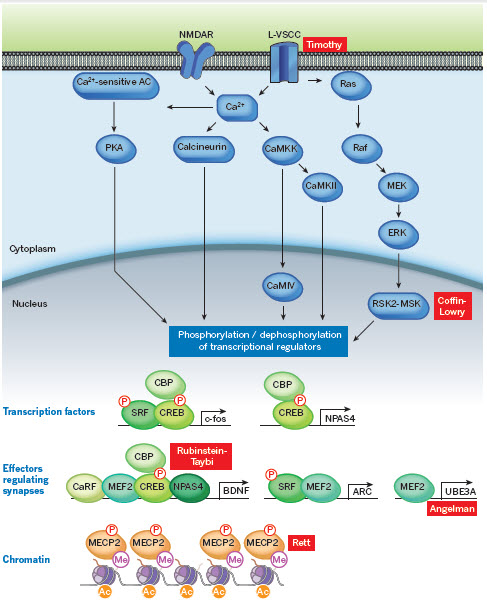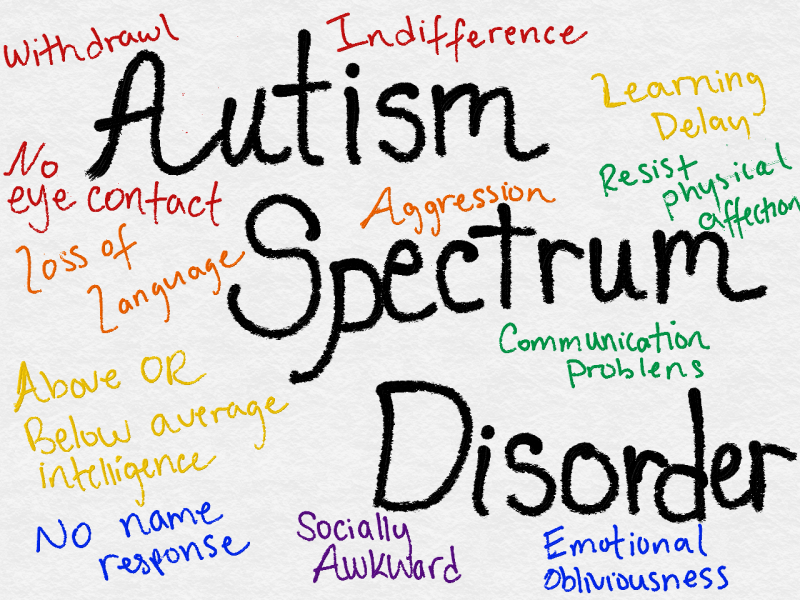Autism Spectrum Disorders (ASD) have become a large topic of discussion in the public eye for many years. While previously it had been treated and diagnosed as many distinct conditions, the medical community eventually recategorized it as a range of disorders on the same spectrum. If you’re interested in the rich history of diagnosing and characterizing ASD, check out this article. It is particularly difficult to characterize and discuss because it is a complicated array of diseases that have a large variety of symptoms, signs, and related diagnoses. It is also very difficult to properly analyze because there is widespread misinformation about ASD, in particular regarding vaccines. Due to this, it is very important for scientists to share information, especially novel research about ASD to combat misconceptions and ignorance about the topic.
What is ASD?
According to the Center for Disease Control (CDC) and the DSM5, or the diagnostic manual that psychiatrists use in practice, ASD is characterized by three main persistent deficits. First, is deficits in social- emotional reciprocity. People with ASD may struggle to share emotions, participate in normal back-and-forth conversation, or may have poor approach to social situations. Second, ASD is characterized by difficulties with nonverbal communication skills. Those affected may struggle making eye contact, lack of facial expressions and gestures, and an inability to interpret facial expressions and gestures from other parties. Finally, those with ASD will most likely struggle with interpersonal relationships. Adjusting to social context may be challenging or there may be a disinterest in peers overall. ASD includes a wide range of disorders, and the severity varies by a large number of characterizations as well. Additionally, characterization of a variety of related issues can coincide with a diagnosis of ASD, including identification of a intellectual or speech impairment, a behavioral disorder, or an underlying genetic cause, like Rett Syndrome.
What is the controversy?
There is some controversy surrounding the choice to characterize previously separate conditions as a spectrum of disorders. Some patients and families feared that the loss of an official name, like Asperger’s, would lead to dismissive care and loopholes for insurance companies to revoke services. The official change was made in 2013, and while there are some manuals other than the DSM5 that take a slightly different approach, overall the change was not problematic for insurance coverage. That being said, it does have a tendency to exclude girls, older populations, and patients with milder presentations than the previous manual, DSM4.
This however, is not the most controversial topic in relation to ASD. About 20 years ago, twelve scientists published an article stating there was a connection between the MMR vaccine and autism. This paper, however, was ethically and scientifically unsound. Nearly every author from the paper voluntarily rescinded the paper and confirmed that there was no causal evidence supporting this theory. Additionally, the lead offer, Dr. Wakefield, failed to disclose financial conflicts of interest. In other words, he was being paid by a lawyer that were suing companies claiming that their vaccines caused autism. He also falsified data that was published in the study, making any “evidence” unequivocally false.
Any suggestion that vaccines cause autism has been irrefutably proven false, through many extensive studies, across sample sizes in the hundreds of thousands. Autism is not caused by vaccination. Please read this paper if there is any doubt on these statements for a full analysis.
What is the cause of ASD?
While ASD are largely genetic disorders, there are a variety of prenatal environmental factors that contribute to the likelihood of a child being diagnosed with ASD. To be clear, environmental factors here are being used in the technical sense, which means they typically refer to anything other than a genetic alteration. While exposure to toxic chemicals during pregnancy could alter fetal development, so can factors like maternal and paternal age, side effects during pregnancy, and socioeconomic standing. To read more about environmental factors and ASD, read here.

Scientists use animal models to study disease in humans. Unfortunately, this makes ASD very challenging to study because there is not an equivalent animal model for the human behaviors. Because of this, scientists use genetic disorders that are well characterized and have many characteristics associated with ASD in order to glean more information about the biochemical pathways that may be involved across the spectrum of disorders. To the right is an image giving an overview of these pathways. What nearly every disease pathway goes back to is a massive influx of calcium ions into the cell, which triggers a massive number of downstream effects. The calcium is thought to be increased via upregulated NMDA receptor activity because of increased glutamate release. These pathways eventually alter a variety of processes, including cell adhesion, postsynaptic density, mRNA translation, genetic expression, and synaptic plasticity.
While the true root of ASD is still unknown, by studying these genetic disorders we continue to gain more information that will help us move towards better understanding and treatment. Hopefully, as ASD becomes better characterized in the future, education about the disorders will also increase. This will serve two purposes. First, informed parents are more likely to notice and address the signs and symptoms in their children, which will help them access resources and treatments earlier on. Second, as the general public becomes more educated, dangerous myths can be eradicated.
